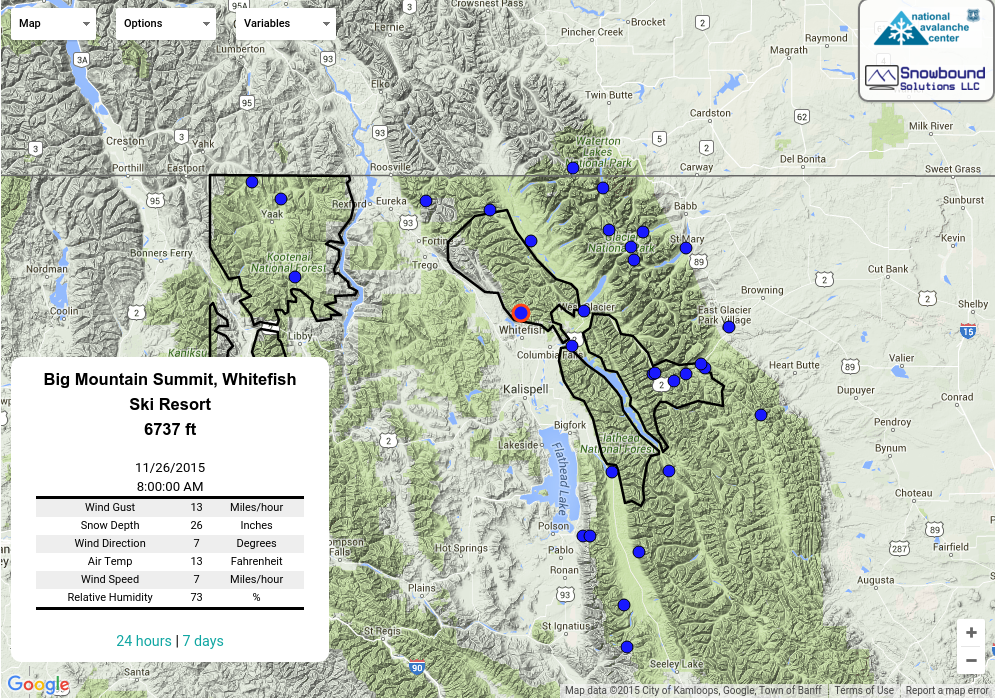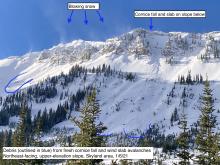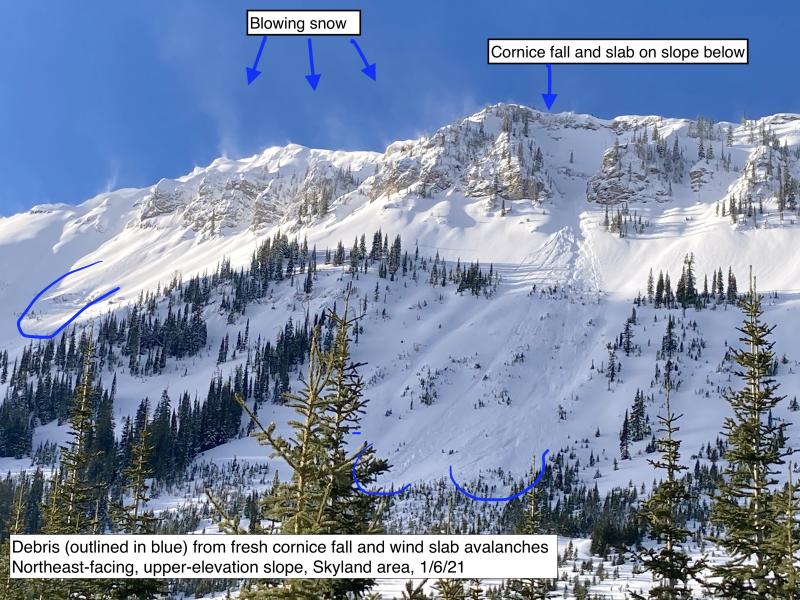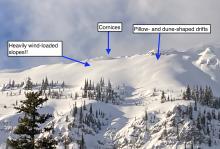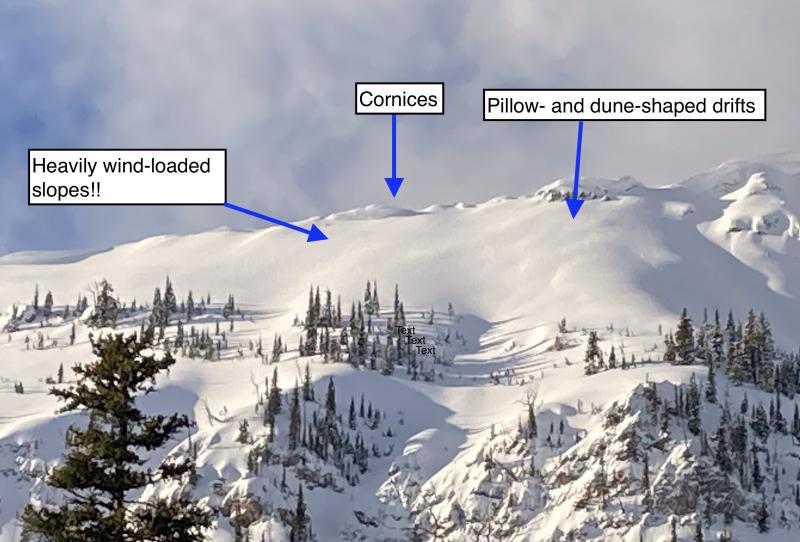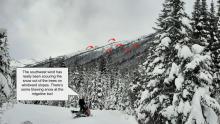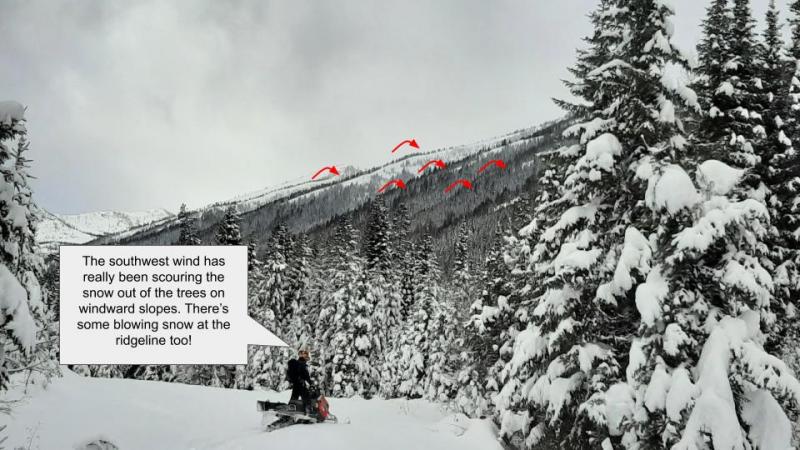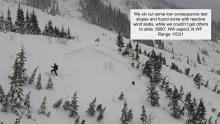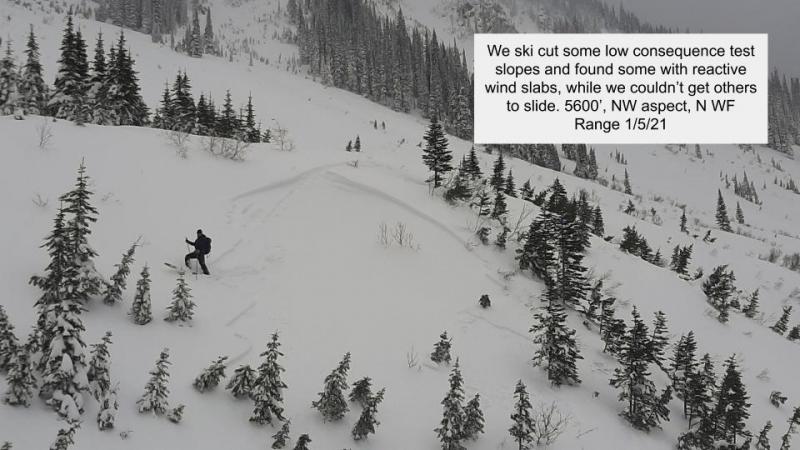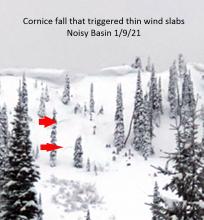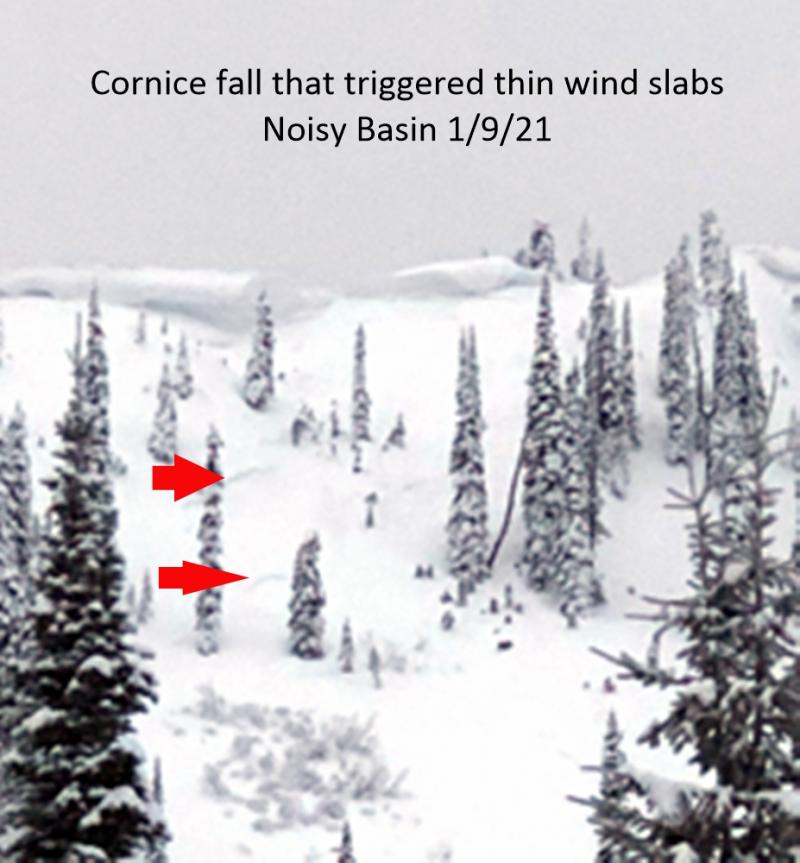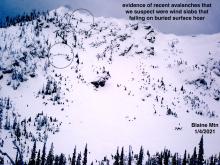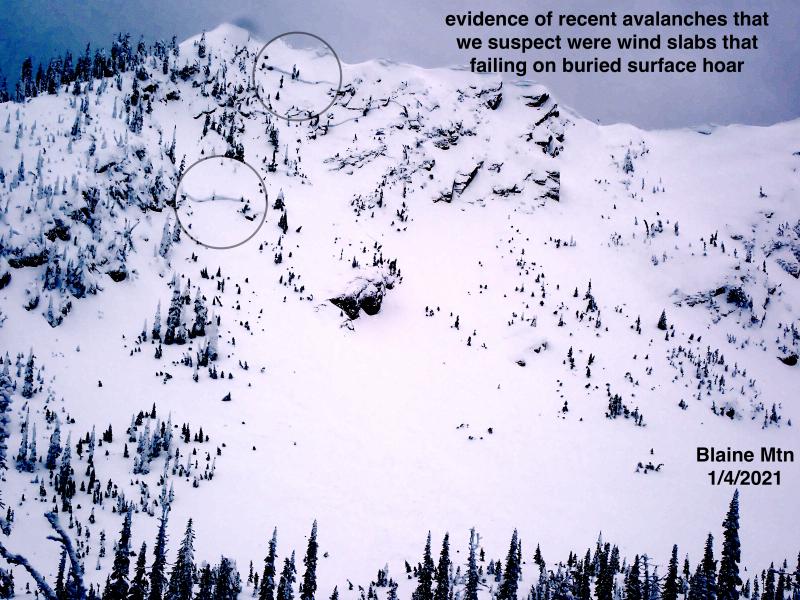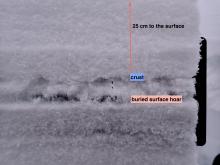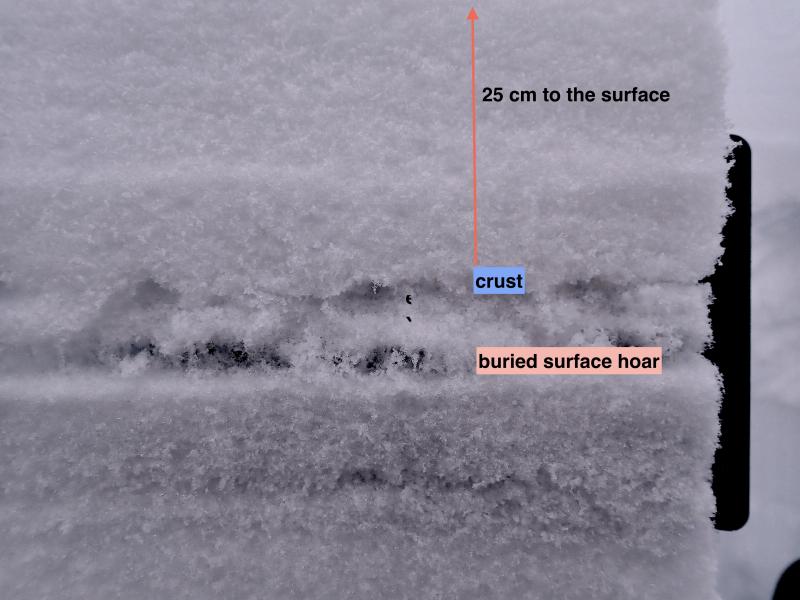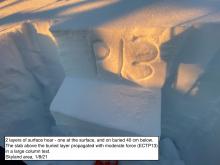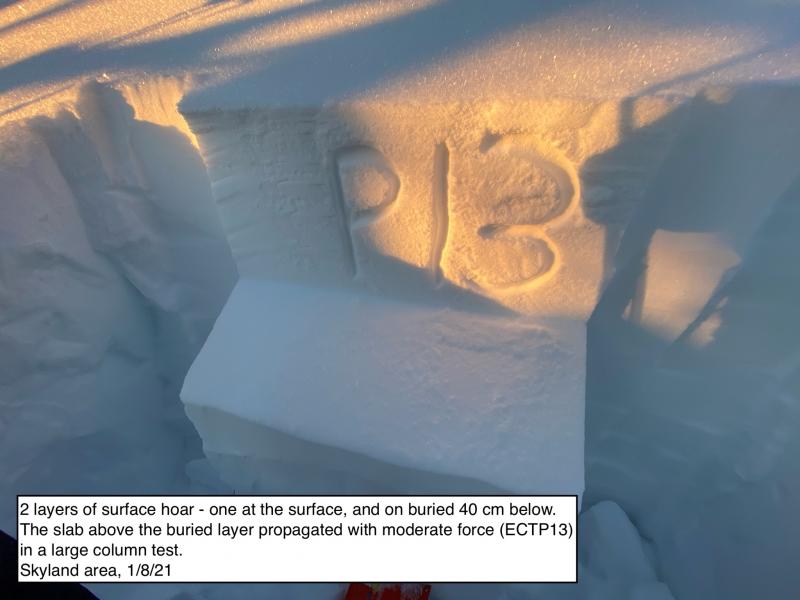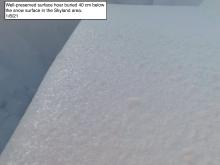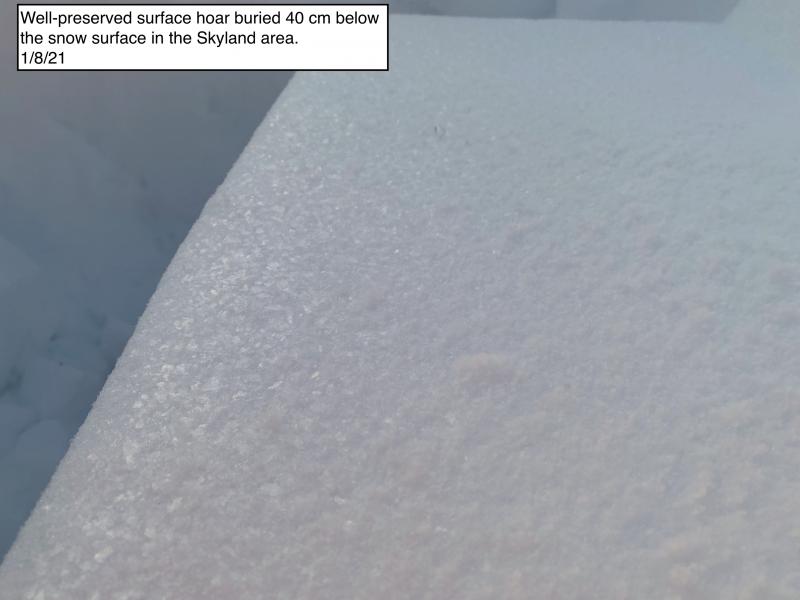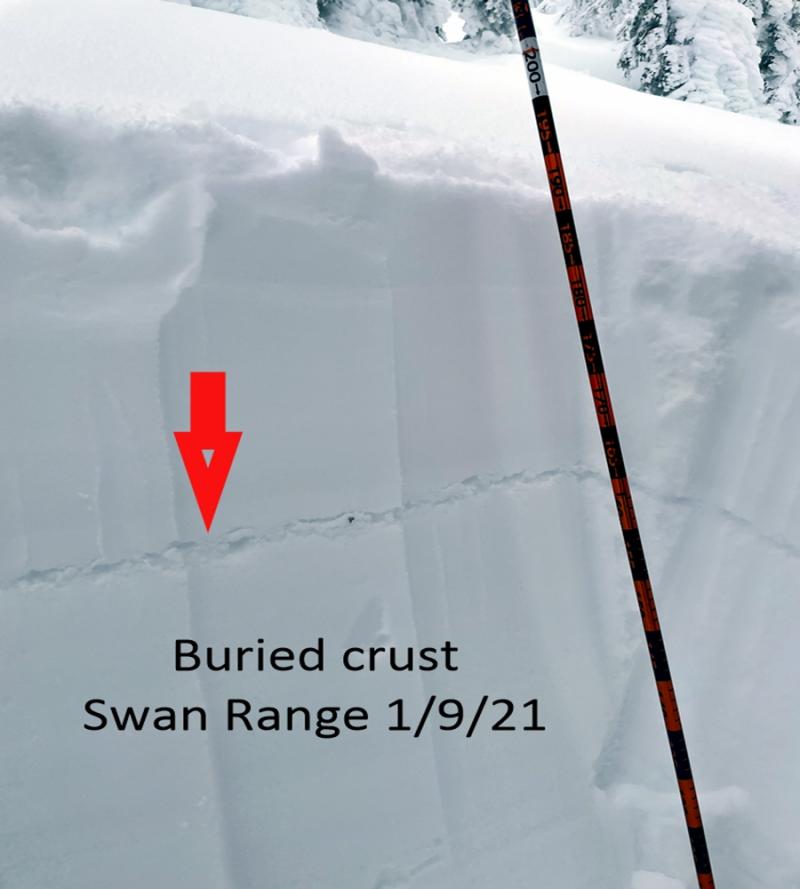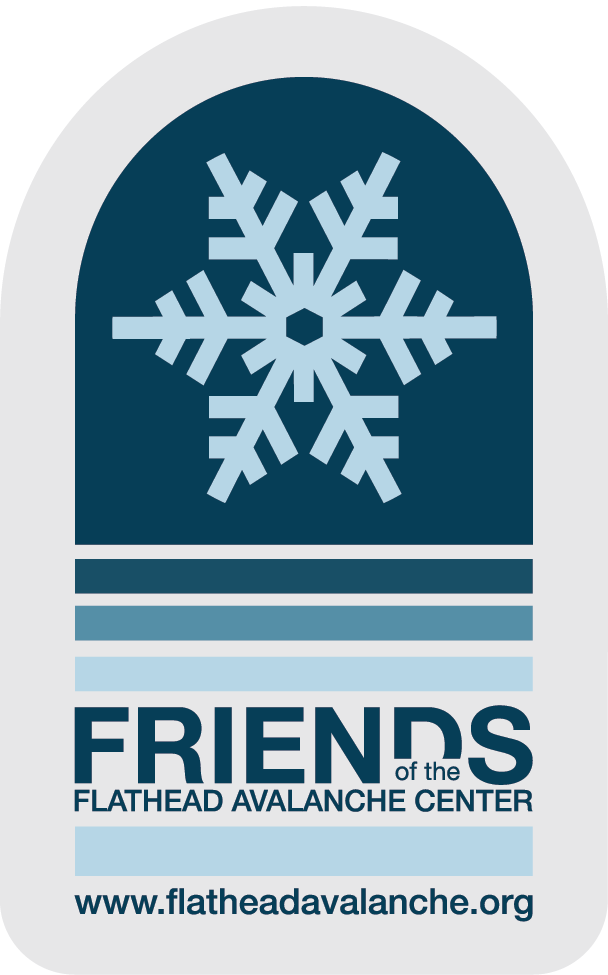| Friday | Friday Night | Saturday | |
|---|---|---|---|
| Cloud Cover: | Cooling temperatures this afternoon. Light showers and strong winds. | Cooler with increasing shower intensity. | Lingering light snow showers |
| Temperatures: | 30-39 deg. F. | 16-24 deg. F. | 24-33 deg. F. |
| Wind Direction: | Southwest | Southwest | West-Southwest |
| Wind Speed: | 16-17 gusts 33-36 | 19-21 gusts 33-41 | 13-19 gusts 32-41 |
| Snowfall: | 1-2 in. | 3-6 in. | 1-4 in. |
| Snow Line: |
Whitefish Range
Swan Range
Flathead Range and Glacier National Park
How to read the forecast
Very dangerous avalanche conditions exist. Heavy precipitation combined with strong winds and relatively warm temperatures over the past 24 hours created an unstable snow pack. The avalanche danger is HIGH above 6000 feet and CONSIDERABLE below. Avoid avalanche terrain in the upper elevations and exposure to run-out zones of avalanche paths that reach into the alpine. Conservative decision-making remains essential in low to mid elevations due to the continued possibility for large, natural avalanches.

4. High
?
Above 6500 ft.
3. Considerable
?
5000-6500 ft.
3. Considerable
?
3500-5000 ft.
- 1. Low
- 2. Moderate
- 3. Considerable
- 4. High
- 5. Extreme
-
Type ?
-
Aspect/Elevation ?

-
Likelihood ?CertainVery LikelyLikelyPossible
 Unlikely
Unlikely -
Size ?HistoricVery LargeLargeSmall

In the past 24 hours top wind speeds averaged 15-40 mph with gusts in the mid-60s. Wind speeds like this are capable of transporting the heavy, wet snow that we received yesterday. Expect new and recent wind slabs that are thick and unstable today particularly in areas that were above the snow level for most of the storm. Strong winds are expected to continue today as will the potential for natural wind slab avalanches.
In more sheltered terrain pay attention to lingering instability in relatively thin storm slabs. Watch for obvious signs of instability like cracking or collapsing. You can identify a storm slab by digging a shallow pit or sticking a ski pole in the snow to check for a dense layer overlying less dense snow.
-
Type ?
-
Aspect/Elevation ?

-
Likelihood ?CertainVery LikelyLikelyPossible
 Unlikely
Unlikely -
Size ?HistoricVery LargeLargeSmall

There continues to be a lot of uncertainty about reactivity of deeper weak layers in the alpine as the snow pack adjusts to the recent load. Weak snow surrounding the Jan. 19 rain crust is still proving reactive in stability tests, and a lot of avalanche activity associated with this interface occurred in the past week. In isolated areas 2-3 feet of snow fell on top of a layer (or multiple layers) of buried surface hoar. Finally, in some locations we continue to find mature depth hoar near the ground. Whumfing sounds (collapsing) of the snow pack while traveling across the snow is an obvious sign of instability.
Dangerous conditions also exist at low and mid-elevation terrain. The snow structure is weak and was not a previous concern before the last series of storms due to the lack of a cohesive slab. Now we have a thick slab above this layer. Pay attention to sneaky slopes, steep pitches, and cut banks well below the tree-line.
With temperatures lingering around the freezing mark this morning and a bit of sun possible today pay attention to the continued potential to trigger loose, wet avalanches in the low to mid elevations. Where the snow surface is moist avoid terrain traps like narrow gullies and cliff bands where the effects of loose snow avalanches can be amplified even on short, steep pitches. These slides can potentially entrain a lot of the abundant recent storm snow.
Ladies, are you interested in refreshing your avalanche knowledge or looking for a great introduction to avalanche safety? If so, join us at The White Room Mountain Shop, in Whitefish, on Thursday, February 16th at 6:30 pm for a free, engaging, and entertaining 1 hour avalanche awareness presentation. The class includes general information about avalanche hazard, how to avoid it, and proper equipment for traveling in avalanche terrain.
Thursday: BNSF Avalanche Safety Team reported natural avalanche activity in John F. Stevens Canyon in southern Glacier Park. One large magnitude avalanche deposited 6-8 feet of debris that was 150 feet wide on the railway, and it also reached the highway. The powder blast from the avalanche was evident 25 feet up a power pole.
Wednesday: Erich and Todd traveled to McGinnis Creek in the southern Whitefish Range to assess stability in the low to mid elevation snow pack. The snow pack was shallow (100 -165 cm) and we found depth hoar near the ground in both snow pits. We experienced a whumpf (collapse) in the snow pack as we approached a test slope. Two Extended Column Tests on an east aspect resulted in column failure upon isolation. On a west aspect the column fractured and propagated with moderate force on the Jan. 19 rain crust. 85 cm from the surface (ECTP18). Snow bikers in the Stryker area also in the Whitefish Range found a deep, upside down snow pack at lower elevations and noted one recent natural avalanche on an east facing slope at about 6000 feet.
Tuesday: Seth ventured to Skookaleel Ridge in the Southern Whitefish Range and observed previous natural avalanche activity of small size and sensitive wind slabs on top of the January 19 crust. A public observation from the Central Apgar Range reported failure and propagation with moderate force in stability tests. Early Tuesday morning a large and destructive natural avalanche was reported by BNSF Avalanche Safety in the Wahoo drainage in the Flathead Range. The avalanche was estimated as a size 3 (D3) on the destructive scale. It left a debris pile about 50 yards wide and 5 feet deep on the railroad tracks.
See below for all observations this season.
In the past 24 hours we picked up an additional 3-6 inches of wet, heavy snow. Snow water equivalents measured 0.6-2 inches bringing storm totals to 1.7-2.7 inches of water. Winds were out of the southwest and west southwest and averaged 15-30 mph with maximum gusts of 26-66 mph. Currently, temperatures above 6000 feet range from 27-32ºF, and winds are southwest at 8-27 mph with gusts from 19-53 mph. Today, we should see temperatures rise above freezing before we start to cool later in the day. Lingering showers will taper this morning and we should see a little sun before they resume in the afternoon.
| 0600 temperature: | 27-32 deg. F. |
| Max. temperature in the last 24 hours: | 31-36 deg. F. |
| Average wind direction during the last 24 hours: | South-Southwest |
| Average wind speed during the last 24 hours: | 15-30 mph |
| Maximum wind gust in the last 24 hours: | 26-66 mph |
| New snowfall in the last 24 hours: | 3-6 inches |
| Total snow depth: | 73-111 inches |
This advisory applies only to backcountry areas outside established ski area boundaries. This advisory describes general avalanche conditions and local variations always occur. This advisory expires at midnight on the posted day unless otherwise noted. The information in this advisory is provided by the USDA Forest Service who is solely responsible for its content.

